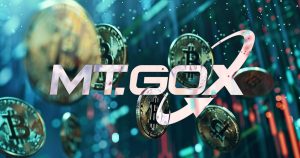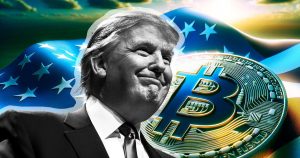Where did NFT terminology originate?
Naturally, as the NFT space is dominated by crypto users, NFT terminology draws heavily from the crypto culture, but also diverges. Some Web3 terms are completely specific to the NFT scene and its history.
Mainly, NFT degens are mainly made up of millennials and GenZ. Therefore a lot of the web3 jargon and NFT terminology comes from those generations of people. Words like ‘Baddie’ and ‘Simp’ are popular with those generations aside from their affinity for crypto.
Then, lots of words and definitions in this NFT dictionary are also inspired by pop culture, art movements and even traditional finance. For example, the NFT uses “bear and bull markets”, like traditional finance does. But they also use “HODL”, a word created by an inebriated Reddit user. These are really not the only examples of crazy bits of NFT terminology created by the community. Some of the words in this NFT Glossary even came from memes!
NFT Slang and Jargon words on Twitter
A lot of the words and terms included in this dictionary are popular slang terms on NFT twitter today. These are loose terms that change and build as the NFT community grows. For example, the word “Bagner” became a thing simply because of one twitter users misspelling, but has already fallen out of fashion. Since Zagabond came up with such a lame excuse for his 3 previous failed projects, the space is full of people using the phrase “I’m still learning” whilst being dishonest. Lots of NFT slang develops via a cultural reference . In fact, a lot of terms in the space also come from NFT memes.
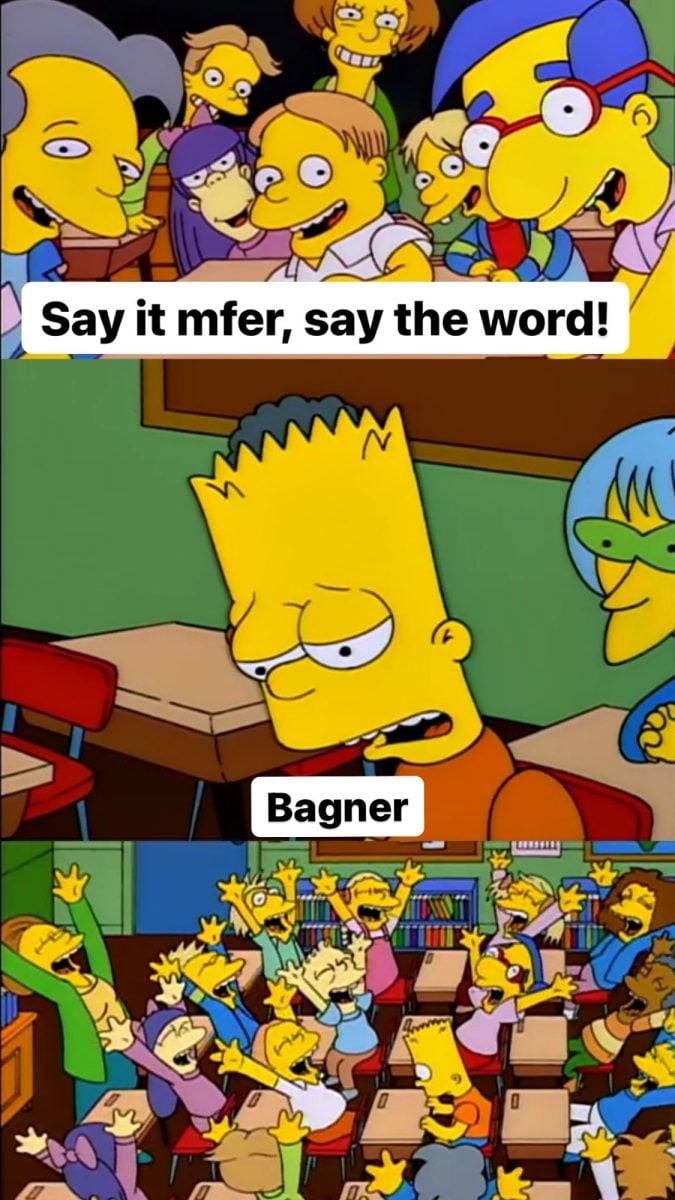
The Ultimate Dictionary of NFT Words and Definitions
In this dictionary we have included all of the most popular NFT words and terms from A-Z. Some of the words included in this list are not strictly about NFTs or web3, however, some of them may be integral to understanding complex concepts in the metaverse
So sit back and relax and let us take you through the NFT Evening Dictionary of the most important web3 terms of 2023. Or, if you’re serious about trading NFTs, maybe even save our terms to your own dictionary of important web3 terminology! Check back in regularly, as we often update this NFT Dictionary with the latest words and the most on-topic slang. Plus, make sure to reach out to our team on twitter if we missed a piece of NFT slang you love!
10k Project
A 10k project is an NFT collection consisting of approximately 10,000 avatars. This type of NFT was arguably pioneered by the CryptoPunks collection in 2017 with many new ones following since then. They don’t all have exactly 10,000 avatars though, but the term is used to refer to this type of collection rather than the exact number of avatars.
Airdrop
Airdrop refers to sending NFTs or tokens to users’ wallets, usually for free. Typically, projects airdrop NFTs to promote their collection or to reward someone for their loyalty, participating in competitions, and so on.
Avatars
A digital representation of you! Therefore, Avatars can be 2d images that represent you online, or they can be 3d hyper-realistic beings ready for the metaverse. Avatars are human personification in the digital world.
Ape (into) verb
Buying something just for the hell of it, often without having done your proper due diligence.
Bagner
This word literally means “banger”. This is always used when something is particularly good. It could be a piece of artwork, an opinion, a tweet…but mostly it’s a term used for telling someone their joke was funny. It got out of control when one twitter user misspelled “banger” and suddenly there was even an NFT collection with the same name.
Blockchain
A blockchain is a distributed ledger (or database) that can securely store information digitally. Notably, blockchains store data across distributed devices (nodes) of a worldwide computer network. In other words, a decentralized server stores and manages the information, instead of a single centralized server. The technology facilitates an immutable and transparent record of information, which is always accessible to the public. For this reason, blockchains are popular for their use in cryptocurrency and NFT systems.
Bozo
A bozo means what a bozo has always meant. But those deep in the NFT scene are throwing it out left right and center. Guy gets scammed? He’s a bozo. Chooses the wrong NFT to buy? Yeah he’s a bozo as well. Do you have a ledger yet? Well you might be a bozo too.
Burn
The word “burn” in NFTs essentially means “to destroy”. Burning an NFT costs ETH but is also deflationary which may increase the value of an NFT (or currency). Also, sometimes a project may require you to burn an NFT to receive something else!
CC0 – Creative Commons 0
The term cc0 means “Creative Commons Zero”. It means the owners of the IP (Intellectual property rights) relinquish all copyright and the like to the public domain. When this terminology is used in the context of NFTs, it is referring to NFT with relinquished IP Rights. What that means is anyone can reproduce a cc0 NFT. Even non-holders can create commercial goods from cc0 NFTs with no legal repercussions. You don’t even need to attribute the original creator.
Clean
You may be thinking, “clean? Am I lost?”. But in fact, a clean NFT is one with minimal or extremely complimentary traits.
Collectibles
Collectibles are unique fungible tokens with differing rarities. This makes them “collectible” as you are vying ton
Cold Wallet
A cold wallet is a type of crypto wallet. Hardware ( or cold) wallets store crypto and non-fungible tokens offline, making them a more secure option. The most popular cold wallet companies are Ledger and Trezor. This is the opposite to hot wallets, such as Metamask.
Crypto wallets
Wallets or crypto-wallets are where you store, transfer, and manage your crypto assets, including cryptocurrencies and NFTs. The main two types of crypto-wallets are either hot, or cold. Read our guide on the best crypto wallets to learn more.
DAO
DAOs or Decentralized Autonomous Organizations are organizations run on the blockchain by a group of people without any company hierarchy. These are governed by smart contracts that lay out the rules and regulations and take important decisions based on member votes. In other words, unlike a typical company, DAOs function autonomously and without any leadership.
dApps
dApps, short for Decentralized Applications, are any application built and run on decentralized networks such as Ethereum or Solana blockchain. They are powered by smart contracts (we’ll come to that in a bit) and are known for offering privacy and scalability.
Degen
Degens are the collective noun for a certain group of NFT traders. Often self proclaimed, a degen will ape into a project with little to no research and can’t help but give in to the FOMO.
Diamond Hands
A person who holds (or HODLs) on to an asset through price volatility, negative news, poor market sentiment.
Dutch Auction
A dutch auction is where the price starts high, and gradually decreases over time. Many Marketplaces use these types of auctions for NFTs.
DYOR
DYOR is an abbreviation for “do your own research”. The term is very popular in the NFT space as there are many scams and bad actors. Obviously, you don’t want to rush into investing in something simply because an NFT influencer hyped it. So don’t make any hasty decisions due to FOMO (fear of missing out). And above all, just always remember the golden rule—DYOR!
ERC-1155 token
A token standard for semi-fungible tokens. These are NFTs that come in multiples. They do not have separate token IDs, but exist as copies of the same digital asset. Often used for metaverse wearables, game items, or editions of artworks.
ERC-20 token
The token standard for fungible currencies compatible with the Ethereum blockchain. e.g. USDT, MANA, MATIC
ERC-721 token ( and ERC-721A)
A non-fungible token on the Ethereum blockchain. NFTs created with the ERC-721 contract standard are completely unique. This is the standard used for almost ALL avatar pfp projects on Ethereum until the introduction of ERC-721A with the Azuki NFT mint. The ERC-721A contract standard optimises the gas fees associated with minting large generative NFT collections. Now, most collections prefer the ERC-721A standard as it saves them money.
Floor / Floor Price
The ‘floor’ or ‘floor price’ is simply the lowest price at which you can buy an NFT from a specific project on the secondary market.
Fren
“Fren”—a misspelling for ‘friend’. Again, the NFT community likes to laugh at itself, often calling itself weak or pathetic for ‘paper handing’ plays and so on. To complement that, they like to misspell terms on purpose and ‘Fren’ is one of those. If you were hoping for just intelligent NFT terminology, you probably should have tried another dictionary.
FOMO
An acronym for ‘Fear of missing out’. While this is not a crypto-native term entirely, it’s a feeling most NFT traders are familiar with. This is a term you will see everywhere with NFTs as there is no hype without FOMO.
FUD
FUD is an acronym for ‘fear, uncertainty, and doubt’. Usually, it’s used when a person or project spreads rumours or negative news, driving people to sell their NFTs.
Gas fees
The NFT Gas fee is the amount users have to pay to make transactions on the blockchain. The fees go to the blockchain miners who validate transactions on the blockchain. The gas fees vary significantly based on a number of parameters, including network activity.
Gas Wars
NFT gas wars occur during a project launch or high-value sales when a large number of people compete to get their hands on a specific NFT. Essentially, the demand causes Ethereum transaction prices to spike due to network congestion.
Generative Art
With some NFTs, the art is completely determined by on chain elements; such as a transaction hash. To explain, each NFT’s traits will differ, just like an ID number or a barcode would differ. Therefore, this results in randomly generated, or generative art NFTs.
GM/GN
Put simply, GM and GN stand for good morning and good night, respectively. Essentially, the terms are used to greet fellow NFT community members and are often a symbol of the members’ comradery. For example, “GM. Let’s have a great start to the week!”
GMI/WAGMI
Short for “We’re all going to make it”, WAGMI is commonly used by NFT investors to show their optimism for the NFTs they are holding. You can usually see community members screaming “WAGMI/WGMI” in response to some major good news.
Grail
A Grail is an NFT with either very rare traits, a rare combination of traits, or a lack of traits completely. These NFTs are seen as “grails” as they are the most coveted of the whole collection.
Governance Token
A governance token is a cryptocurrency coin that provides DAO members with voting power. Basically, each coin counts as a vote. The DAO will allocate votes in various different ways to members and some members will have more voting power than others. To learn more, check out our full guide on DAOs.
HODL
While HODL is effectively short for ‘Hold On for Dear Life’. In NFT terms, members use it more as a misspelling of ‘hold’. However, Crypto veterans originally used it to convey they are holding on to their assets no matter what. Now, it’s a favourite among NFT users as well!
Hot Wallet
Software (or hot) wallets are crypto-wallets that store the assets online. Good examples of these are Metamask, Phantom and Wallet Connect. Hot wallets are not secure and fall victim to attack much easier than their cold counterparts.
ICO stands for Initial Coin Offering. Basically, it’s the cryptocurrency industry’s version of an IPO. A company will use ICOs to raise funds.
LFG
In NFT terminology, LFG stands for Let’s F****g Go. Community members use the term to express their excitement about something or hype up a person/project.
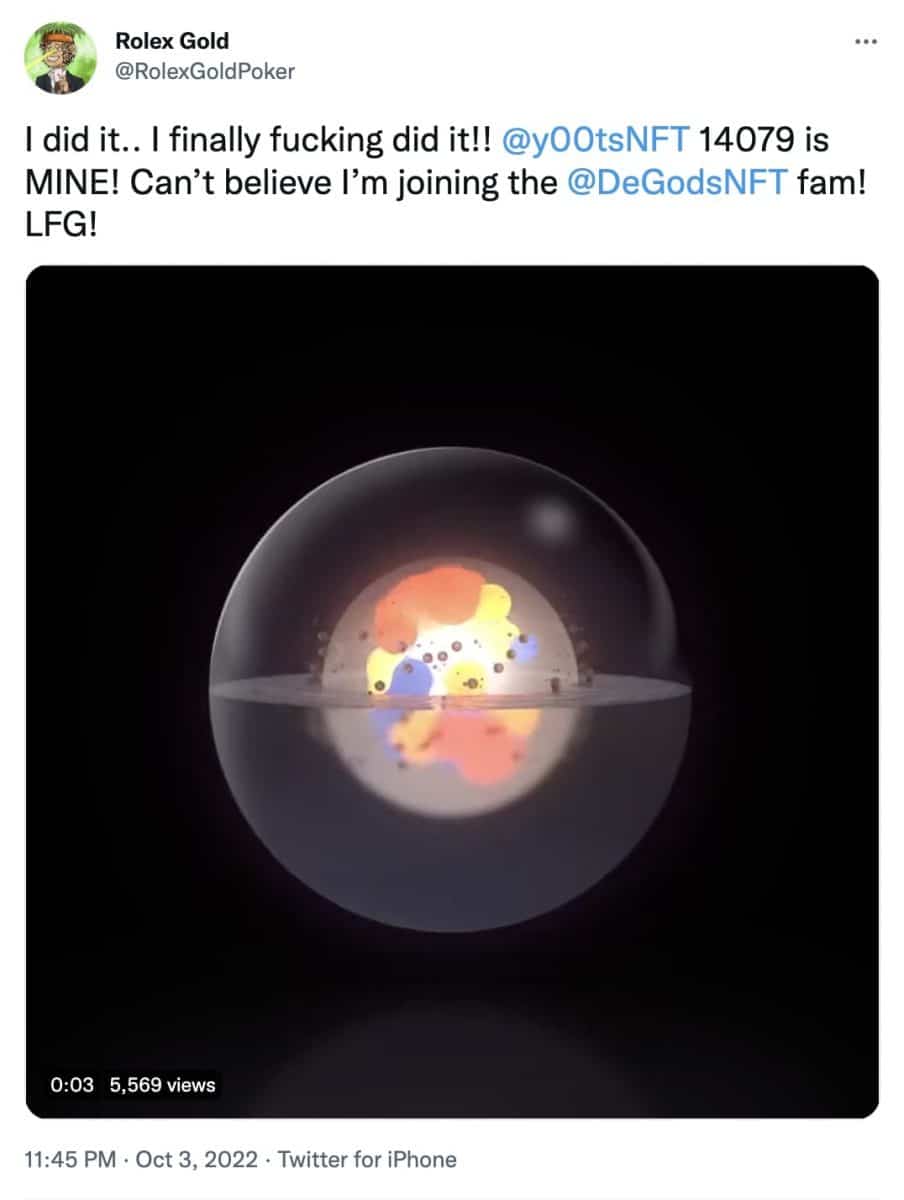
Metadata
The metadata of an NFT is essentially all the necessary and unique data making that NFT exactly what it is. It’s where all of the information attached to your NFT goes. For some NFTs that’s just an image, for others it’s properties, files and more. It is possible to freeze the metadata of an NFT as a smart contract owner. Freezing metadata guarantees the image and properties will never change again.
Mint
In NFTs, minting means to publish an NFT on the blockchain. Once minted, the NFTs are available to the public for viewing, buying, selling, or trading. Plus, minting is final. There are no take-backsies! Minting is a very important concept in web3 so make sure you add it to your personal NFT dictionary.
Metaverse
The metaverse is a virtual world where people can roam around as avatars, attend concerts, shop, play games, attend meetings—pretty much everything you’d do in the real world. Using this terminology for a virtual world does not mean that it’s using web3 technology. The Metaverse can refer to web2 or web3 virtual worlds and experiences.
Moon
‘Going to the moon’ or ‘mooning’ refers to an asset’s value increasing by a lot.
NFT
In its simplest sense, ‘Non-Fungible Token’ or an NFT, is a blockchain-based digital certificate that links to a digital or physical asset. Essentially, they function as proof of ownership and authenticity. What makes NFTs truly attractive is their versatility—anything from music and art to real estate, tickets, videos, and games can be NFTs.
NFT marketplace
In essence, an NFT marketplace is a platform to buy, sell, view, and trade NFTs. The most popular marketplaces are built on the Ethereum and Solana blockchains. This includes OpenSea, LooksRare, Magic Eden, and Solsea.
NGMI
The meaning of NGMI is simply “Not gonna make it”. It’s pretty much the opposite of WAGMI. You can use this term to scold your least favourite traders on twitter or even use it at your parents when they ask why you bought another NFT.
Open Edition
Editions are copies of the same NFT. Then, Open Editions are editions that come with an unlimited number of mints. Often, artists will set limited time windows on Open Editions to keep some kind of exclusivity. Some projects may let you mint forever instead!
OpenSea
Opensea is the leading NFT marketplace on Ethereum often used for secondary sales.
Learn more with our guide on NFT Marketplace OpenSea.
Paper Hands
Opposite to Diamond Hands. Basically, someone who sells something (usually at too low of a price) is said to have Paper Hands. may also be used as a verb:
E.g. I still regret paper-handing my doodles at 1ETH.
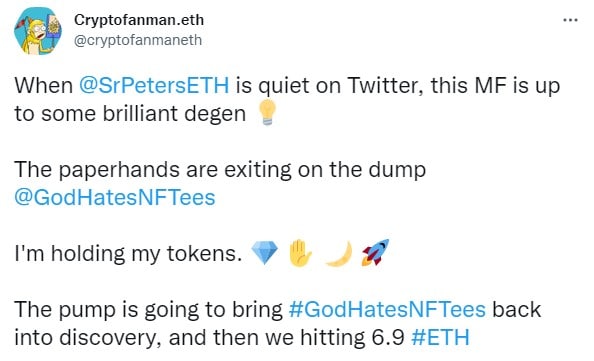
PFP
A PFP or profile picture NFT is one that is designed to be displayed as a user’s social media profile picture, particularly on Twitter. Some common examples include Bored Ape Yacht Club, CryptoPunks, and Doodles.
Play To Earn
Play-to-earn (P2E) is a game model that rewards players with cryptocurrency, in-game tokens, or even NFTs simply by playing the game. Axie Infinity made play to earn popular but now there are countless games using the model. Find out more with our guide on What Play To Earn is!
Probably Nothing
Usually something. This is the go-to way to hype people up without saying anything…and then after all it really could be nothing. In 2022, it’s a little overused but you might see some crypto OGs still using it.
Reply Guy
A reply guy is someone who merely replies to tweets on NFT twitter. Often reply guys represent the backbone of the NFT industry. What would we do without reply guys??
Reveal
An NFT reveal is one of the most exciting parts of the journey! With generative projects, the artwork won’t actually be created until the NFT is minted. The reveal is when the metadata is published. This means all of the final artwork and trait rarities are available for viewing!
Roadmap
An NFT project roadmap is a document that details a project’s short-term and long-term goals, milestones, and plans. It is an important parameter that helps users make investment decisions. Needless to say, a solid roadmap can make or break a project. However, whether it actually delivers its roadmap promises, is well, a discussion for another day. Make sure you note this one down–it’s one of the most important words to know in the NFT scene.
Royalty
Royalties are percentages of NFT sales prices that go the the creator. Basically, it works much like music royalties do. Each time someone sells the NFT, a percentage of that sale is paid straight to the creator and that is called a royalty.
Rug pull / Rugged
In the simplest terms, a rug pull is a scam where an NFT project’s team disappears with all the money they raised. Often, these collections are so heavily hyped that many unsuspecting investors fall for the scam, only to be left with no NFT and no money. This is an important word to add to your personal dictionary if you’re an aspiring NFT trader.
Utility Token
A utility token is usually a cryptocurrency coin that has a use for a specific community. For example, many DAOs have a utility token which can offer holders added benefits separate to the coins they use for governance. NFT projects also use utility tokens to reward holders for staking NFTs and so on
Ser
A misspelling, and to some regard, an attempt to make the word “sir” more cute. However, watch out! Degens often use this one poking fun out of authority figures rather than respecting them these days. It’s probably not something you’ll see in a regular Dictionary any time soon, but it’s a funny bit of NFT jargon to know.
Smart contracts
Essentially, smart contracts form the backbone of NFTs. These digital contracts are essentially programs on a public blockchain, or ledger or data. Contracts consist of a list of conditions. If certain conditions are met, the contract can execute specific processes automatically. In other words, you don’t need a third party to conduct transactions between different users. Instead, smart contracts control the transactions, making them secure and transparent.
In fact, there’s way more terminology involved with just NFT smart contracts themselves! If you want to learn more, check out our guide on smart contracts.
Slow or Soft Rug
A ‘soft rug’ is a slow rug pull :a long-term scam where founders are still partially active in their communities. However, in reality the founders (or sometimes the developers) are siphoning the mint money out of the community gradually without providing any real value. This is really important terminology to know, as the NFT space is rife with soft rug pulls you will want to avoid.
Learn more about Soft Rug Pulls.
Sweep (the floor)
If an influencer says they are going to “sweep the floor”, they mean they will buy up a large number of a collection’s cheapest NFTs on the secondary market. Sometimes this will be orchestrated by NFT founders themselves but can also refer to DAOs or individuals (whales).
Wearables
That means the word ‘wearables’ is not strictly synonymous with ‘NFT’. Wearables are simply digital items you can wear in all metaverse, AR or VR worlds. For example, some companies, such as the Fabricant, release clothes for metaverses like Decentraland and the Sandbox. Others release clothes compatible with zoom and hangouts.
In web3 metaverses these wearable items are NFTs, therefore you can trade, sell and buy them on secondary markets. In Web2 metaverses these are only available in-game and you may not trade them.
Wen…?
‘Wen’ is literally just ‘when’. Like “Ser” this is just another example of insider-joke words used by the crypto community. While we probably didn’t need to include it in this NFT terminology dictionary for most of you, we’re sure someone will appreciate it.
Whitelist
The NFT whitelist (or allowlist) is an exclusive list of users who get early access to mint one or more NFTs at a collection’s launch. While there isn’t enough time to explain every whitelist method in this dictionary, check out our guide on NFT Whitelists (or allowlists) to learn more.
Whale
A “whale” is term for someone with a lot of money. To explain, it is a person who has already invested in (or can invest in) high-value NFT projects. Therefore, their enormous capital has the potential to drastically affect the market—positively or negatively.
WLTC
Simply, this one is “We like the cats”. This was a big battle cry for Cool Cats lovers circa 2021, but we don’t see it too much anymore. Maybe these words (or this phrase?) might not be that cool anymore, but at one point WLTC was so common we just had to include it in this NFT dictionary. Besides, who could forget when Farokh covered himself in milk “for the Cats”. We certainly didn’t.
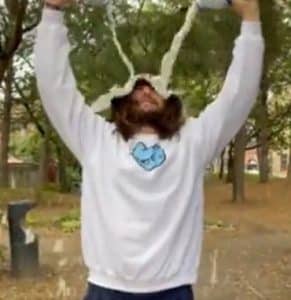
1/1
A one-of-one (1/1 or 1:1) is a term to describe an NFT that is a completely unique single edition. The word unique meaning it there will never be another edition of that specific NFT ever again. Naturally, their rarity makes them extremely valuable. For example, NFT artist Beeple’s iconic Everydays NFT art fetched $69 million at the time. 1:1s ca represent some of the highest value NFTs sold, meaning you probably want to write this word down on your top most important terminology list.
NFT terminology: Making the most of Web3 words
The NFT space is ever-evolving, and with it, the terminology in use. While you have a good start on Web3 and NFT terms with this list of words, we love evolving. We’ll keep adding the latest web3 words to this NFT Dictionary to ensure you never fall behind. So make sure to save/bookmark this article! If we missed any of your favourite web3, NFTs or the metaverse terminology, tweet us @NFTevening with your favorites.
